The 81st Press Conference on Xinjiang Uygur Autonomous Region
(December 30, 2022, Beijing)

Photo taken on December 30, 2022 shows the 81st Press Conference on Xinjiang Uygur Autonomous Region held in Beijing. (Photo by Xinjiang Daily/ Zheng Zhuo)
Xu Guixiang: Thank you for joining the 81st Press Conference on Xinjiang Uygur Autonomous Region. I am Xu Guixiang, spokesperson of the People’s Government of Xinjiang Uygur Autonomous Region. Sitting beside me is Elijan Anayat, spokesperson of the People’s Government of Xinjiang Uygur Autonomous Region. Also joining us via video link are other representatives from local communities in Xinjiang.
For today’s press conference, we’re going to express our views on recent issues and then communicate with friends from the media.
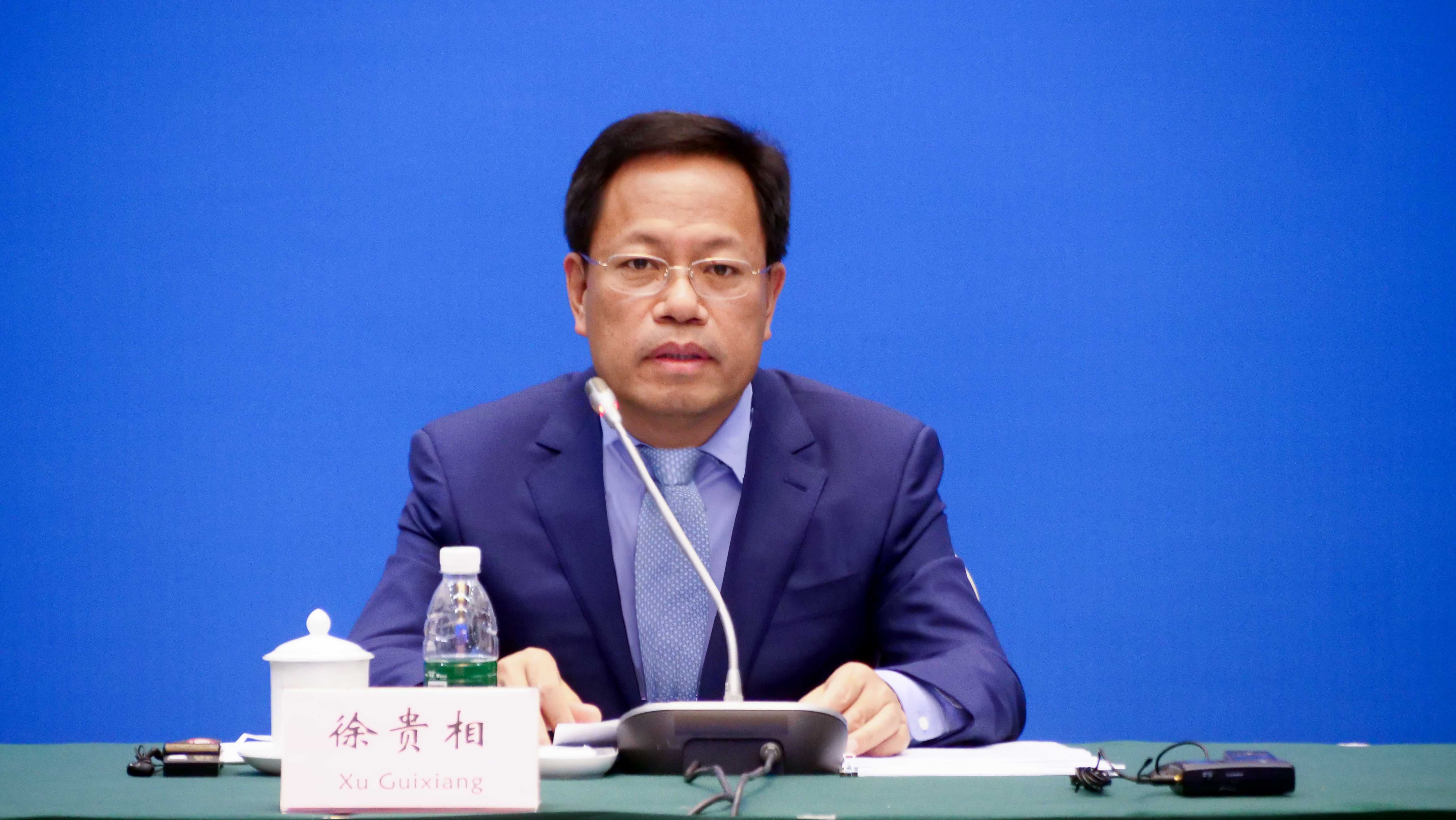
Photo taken on December 30, 2022 shows Xu Guixiang, spokesperson of the People’s Government of Xinjiang Uygur Autonomous Region speaks at the 81st Press Conference on Xinjiang Uygur Autonomous Region held in Beijing. (Photo by Xinjiang Daily/ Zheng Zhuo)
I. Views on the Xinjiang related resolution passed by the European Parliament, which claimed that the Chinese government used epidemic control measures to systematically suppress Uygurs
Xu Guixiang: Recently, the European Parliament passed a resolution, of which the Xinjiang-related part falsely alleged that the Chinese government systematically suppressed the Uygurs. We deem what is related to Xinjiang in this resolution of the European Parliament as extremely preposterous. The Covid outbreak happened in Xinjiang since August this year was a major public healthy emergency with the fastest spread, the widest coverage, the largest number of infections and the greatest difficulty in containment. It seriously affected the normal work and life as well as life and health security of the people of all ethnic groups. In the prevention and control of this outbreak, the governments at all levels in Xinjiang have upheld a people-centered philosophy, prioritized the work to ensure and improve the people’s livelihood, listened to the voices and tended to the appeals of the people, and effectively carried out work in ensuring smooth logistics, and keeping supply chains, agricultural production and basic livelihood stable. They have helped the people overcome difficulties, especially the people’s pressing concerns such as basic necessities of life and medical treatment with all their hearts, minds and strengths, thus effectively protecting the people’s rights to life and health. The people of all ethnic groups including the Uygurs have kept in mind the bigger picture of epidemic control in the whole country, actively participated and cooperated in all work related to epidemic containment, formed a powerful synergy and fostered a strong sense of a community of the Chinese nation.
It must be pointed out that the virus transmission follows its own objective laws, is not directional and does not target any ethnic group. All Covid policies developed and implemented by Xinjiang have never been marked out discriminatorily against any ethnic group, either. The European Parliament concocted disinformation and runned counter to common sense. They put lables of "human rights violation" on whatever Xinjiang do, which fully shows they are suppressing Xinjiang by all kinds of means.We hope that the international society can see their dark minds and not believe such nonesense.
II. Views on the Xinjiang Police Files
Let’s invite Mr. Elijan Anayat to comment on this.
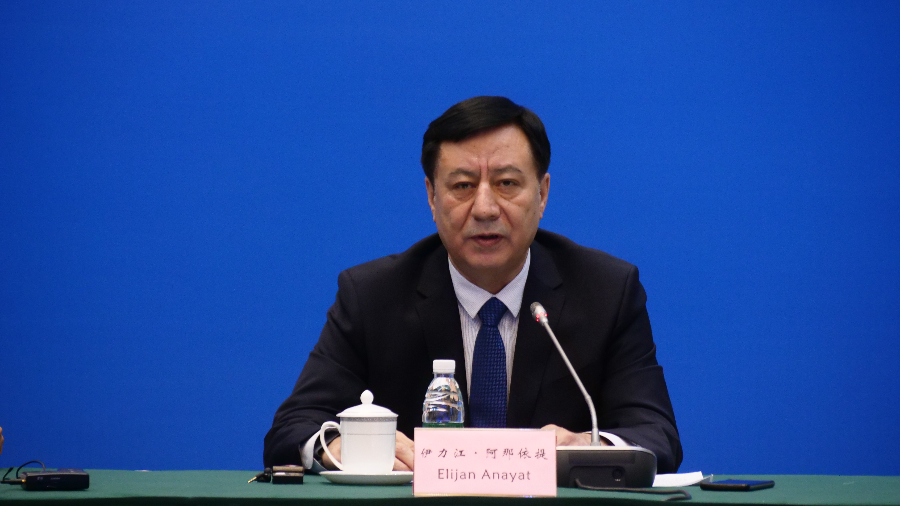
Photo taken on December 30, 2022 shows Elijan Anayat, spokesperson of the People’s Government of Xinjiang Uygur Autonomous Region speaks at the 81st Press Conference on Xinjiang Uygur Autonomous Region held in Beijing. (Photo by Xinjiang Daily/ Zheng Zhuo)
Elijan Anayat: The German anti-China scholar Adrian Zenz’s recent release of the so-called Xinjiang Police Files on the website of the Victims of Communism Memorial Foundation has seriously misled the international community’s understanding of Xinjiang.
First, Adrian Zenz has long been notorious in the world. He is a member of the Victims of Communism Memorial Foundation, a far right-wing organization funded by the US government and once known as the shelter of new Nazis, fascists and anti-Semitic extremists from more than 20 countries. He believes that he has a sense of mission to oppose China and is “led by God to do this”. With such an evil intention, he published a number of Xinjiang-related reports and remarks, which are actually all based on speculation, imagination and conjecture, thus completely unjustified. The international community has long seen his true face. And this time, Adrian Zenz is doing his old tricks again to play up the so-called Xinjiang Police Files, which just further exposes his conspiracy of destabilizing Xinjiang.
The Xinjiang Police Files hyped up by Adrian Zenz is full of disinformation, which cannot stand factual research. We have noticed that the Xinjiang Police Files published a picture wall composed of the bareheaded photos of 2,884 people under so-called arbitrary detention, claiming that they are innocent victims. Fact-finding investigation by competent authorities has found that the majority of them are living a normal life. For instance, Nurgul Abdukerem, one of the so-called detainees in the picture wall, graduated from Xinjiang Vocational College of Applied Technology in June, 2022, and went back to work in Shufu People’s Hospital in her hometown. She and her relatives have all been living a normal life, with none of them ever being detained. Azmatjan Rozi, another so-called detainee in the document, has been farming with his wife in his hometown, earning a stable income. Both of his two children are attending senior middle school. He and his wife and children have all been living a normal life and have never been detained, either. Adrian Zenz claimed that satellite images proved that a vocational education and training center in Shufu county is located behind a new detention center and near Ishlamchi Road, and described its four watchtowers and six police stations. Yet a field visit shows that the vocational education and training center alleged by Adrian Zenz is actually the Shufu Technical School located in Tokzak Town, Shufu county. The school is engaged in agricultural and stock raising skill training for farmers and herdsmen, aiming to help them increase income from planting or breeding. It is not a vocational education and training center at all, and there are no the so-called “four watchtowers and six police stations”.
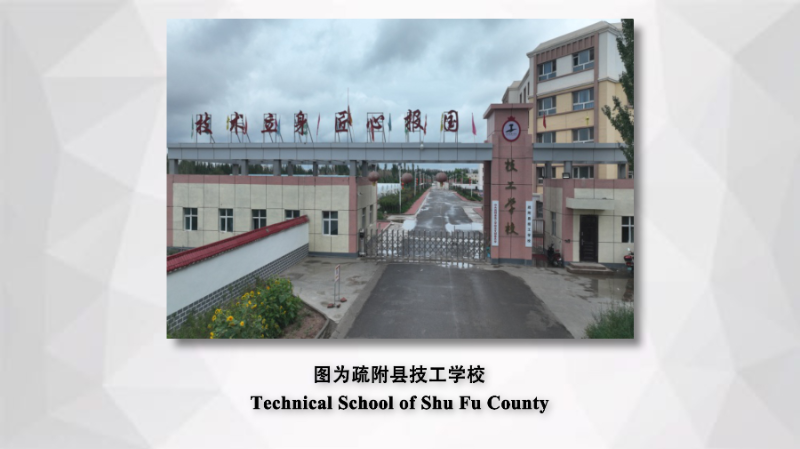
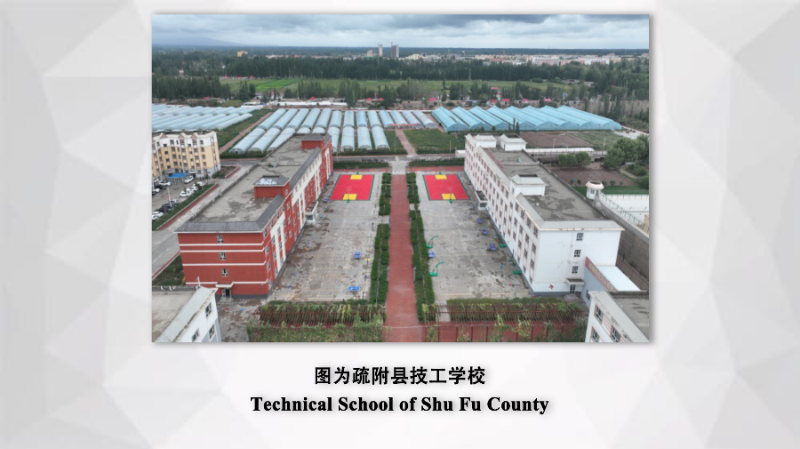
Adrian Zenz claimed that the vocational education and training center in Shufu county Industrial Park is rebuilt from a detention facility. Field visit to the place found that the center alleged by Zenz is actually the Guangzhou Industrial Park of Shufu county, which has a total of 42 enterprises, and 13 employees’ dormitory buildings. The industrial park has never established any vocational education and training center since it was built.
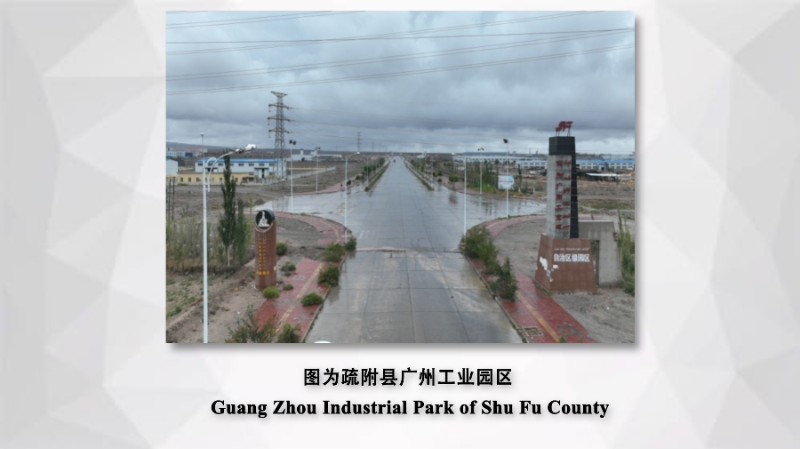
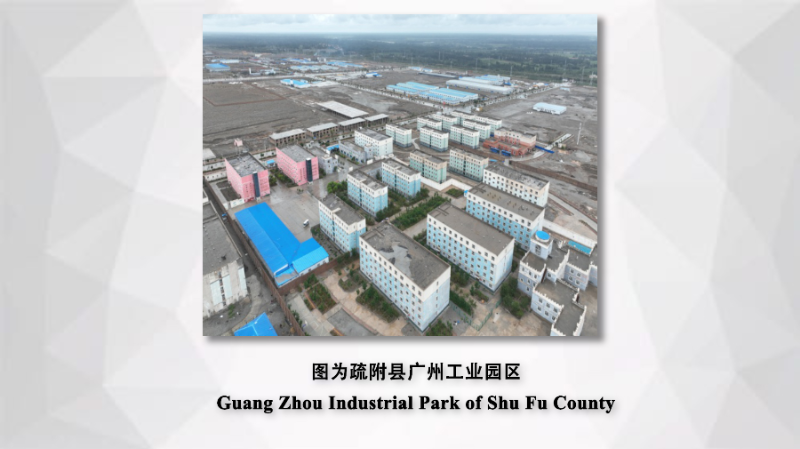
Adrian Zenz claimed that Tekes county used a detention house as a vocational education and training center, and slandered emergency drills by local police in the detention house as a drill to handle escapes and violence at the vocational education and training center. The fact is that Tekes county Detention House has never been used as a vocational education and training center since it was put into use in 2010, and the emergency drill conducted by the police is part of their normal job. He also said that the vocational education and training center forced the trainees to take injections and displayed a photo which he labeled as an old detainee in Tekes county Vocational Education and Training Center receiving an injection. In fact, it is a photo showing Tekes Center for Disease Control carrying out regular blood sampling and physical examination for detainees at Tekes county Detention House. The aim of the examination is to test the detainees for infectious diseases such as AIDS, TB, syphilis, gonorrhea, etc., and offer timely medical treatment. It can be seen clearly in the photo that there are a medical needle used in blood sampling and the top cap of a test tube for storing blood around the medic’s right hand. It is not the so-called forced injection of drugs to the trainees at all.
Adrian Zenz also quoted criminal Omar Bekri’s so-called testimony, claiming that when Bekri returned to Xinjiang from Kazakhstan to visit his relatives, he was detained and put on handcuffs, shackles and a black hood, implying that Xinjiang detains Uygurs arbitrarily. In fact, from March 26, 2017 to November 24, 2017, Omar Bekri was investigated by the public security department according to law. The public security department has found through investigation that he instigated, abetted and funded others to join terrorist groups. In June 2006, he used 22,000 USD in funding overseas jihadists. During the investigation on him, the public security department ensured his various rights in accordance with law, and arranged consular officers of the concerned country’s embassy in China to visit him on July 1, 2017. On November 24, 2017, he was relieved of compulsory measures and ordered to leave the country within a time limit, then he left China on December 4, that year.
Now, let’s watch clips of videos.
Ⅲ. About anti-Xinjiang propaganda film In Search of My Sister
Xu Guixiang: Actually, the anti-Xinjiang propaganda film In Search of My Sister was shot by the ringleader of Uygur activist Rushan Abbas in collusion with Canadian film-making team.
Rushan Abbas is the ringleader of so-called “Campaign for Uygurs” and the former vice president of the “Uygur American Association (UAA)”. For a long time, as a frequent visitor of anti-China and Xinjiang-related campaign, she has been running around to collude with Western politicians and MPs. She denigrates China’s policies on Xinjiang , and hypes up topics such as “genocide” and “human rights infringement”. Her sister Gulshan Abbas, was sentenced to 20 years’ imprisonment in accordance with law in March, 2019 by people’s court due to “participating in terrorists organizations, helping terrorists activities and gathering crowds to disturb the public order”. She is serving a sentence with all legitimate rights guaranteed.
In the film, Rushan Abbas cried foul for her sister by fabricating a flood of fake contents. She catered to the intent of the US and anti-China forces to contain China by Xinjiang-related issues. This farce of trading up is not worth seeing. It must be pointed out that China is a country with rule of law, where criminals must be held accountable. Based on facts and laws, Xinjiang people’s court made sentences on her sister Gulshan Abbas, which stands the test of fact and history.
Ⅳ. About the book Cultural Heritage and Mass Atrocities, published by Getty Publications of the US
Next, Mr. Elijan Anayat will comment on this.
Elijan Anayat: In September 2022, the Getty Publications of the US published a book Cultural Heritage and Mass Atrocities, alleging that more than 10,000 mosques had been destroyed and dozens of religious sanctuaries had been demolished, which were defined as cultural cleansing and genocide. In the course of history, the various ethnic groups of Xinjiang have created a splendid culture and preserved a lot of cultural heritage, which is an inseparable part of Chinese culture. Xinjiang attaches great importance to protecting and developing the best of its ethnic cultures, which has made considerable progress. In 2008, The Regulations of the Xinjiang Uygur Autonomous Region on the Protection of Intangible Culture Heritage were enacted; in 2010, The Regulations of the Xinjiang Uygur Autonomous Region on the Protection of Uygur Muqam Arts were promulgated and put into force. A number of rules for protecting its intangible cultural heritage provide institutional guarantees for rescuing and preserving the heritage in a coordinated and systematic manner. For instance, Uygur Muqam of Xinjiang and Kirgiz epic Manas were registered on the “UNESCO Representative List of the Intangible Cultural Heritage of Humanity”, and Uygur Meshrep on the List of Intangible Cultural Heritage in Need of Urgent Safeguarding. In addition, religious heritages are effectively protected. Currently, a total of 109 religious sites in Xinjiang including Id Kah Mosque in Kashgar, Shengyou Lamasery in Zhaosu, and the Kizil Thousand-Buddha Caves have been designated as major cultural heritage sites under the autonomous regional protection and the state. Among the 109 sites, 46 are key cultural heritage sites under the protection of the state and 63 are under the autonomous regional protection. The central government has allocated special funds to renovate cultural heritage protection sites at the state and autonomous-region levels, including the Kizil Thousand-Buddha Caves, Bezkilik Grottoes, and Id Kah Mosque. Xinjiang has funded the repair of 28 religious venues, including the Emin Minaret in Turpan, Shengyou Lamasery in Zhaosu, and Red Temple (Taoist) in Urumqi. Elements of intangible cultural heritage relating to religion are also effectively protected and passed on. Xinjiang now has 9,542 immovable cultural relics, of which six were World Heritage Sites, 113 were key national sites, 620 were under autonomous regional protection and 4,183 were under county- or city-level protection. Xinjiang now has five cities, three towns, four villages, and two blocks that have been recognized as state-level historical and cultural sites, as well as 18 traditional Chinese villages.
The book Cultural Heritage and Mass Atrocities ignores the measures and results of Xinjiang’s protection of all ethnic cultural heritages. The book, flooded with misinformation, slanders Xinjiang’s polices as “cultural genocide”, which goes against the fact. As to Id Kah Mosque in the town of Keriya mentioned in the book, whose real name is Id Kah Mosque, located in Yutian county. The book depicted that “the mosque’s huge gatehouse was demolished”, while the reality is that the mosque is located on the old town, the center of Bazaar in Yutan county. It was registered as the key site under autonomous regional protection in 1999 and the key site under national-level protection in 2013. The exterior walls of the mosque was built of brick with geometric shapes, which is the typical brick-wood structure of Islamic architecture. Since the founding of People’s Republic of China, Xinjiang has repaired the mosque for three times, allocating more than one million yuan in total. Currently, the main part of the mosque is well preserved with rails around it, and two janitors were assigned to it. In February 2014, the Kunlun Mountains were struck by 7.3 magnitude earthquake, leading to tilt dislocation of subordinate buildings (civilian structures). Thus, it phased out to be religious venue for being identified as dangerous buildings.
Let’s watch the following video.
What’s more, the book mentioned that Sultan Qirmish Sayid shrine of saint’s tomb whose real name was Kurmush’atam Mazar. The book alleged that the transformation of the mazar into a tourist destination desecrates holy site. In fact, the mazar is located in scenery spot Shenmu Park, Wensu county, Aksu Prefecture. The scenery spot is open to the public while the mazar is in closed management. In 1986, with 40,000 yuan from the Wensu county government and 100,000 yuan from public donation, the mosque was renovated with walls and fences installed. In July, 1999, the mazar was listed as the cultural relic under autonomous regional protection. In 2021, government of Aksu allocated 250,000 yuan for further protection. Sign boards and a 320-meter fence were been built. Currently, the mazar is well preserved and 2 janitors was assigned to the task of management.
Now we will connect Yaqup Hasan, the janitor of Kurmush’atam Mazar in Wensu county via video link.
Hello, Yaqup Hasan. We’re now holding a press conference on Xinjiang Uygur Autonomous Region in Beijing. Would you please share with us the information on protection and renovation of Kurmush’atam Mazar?
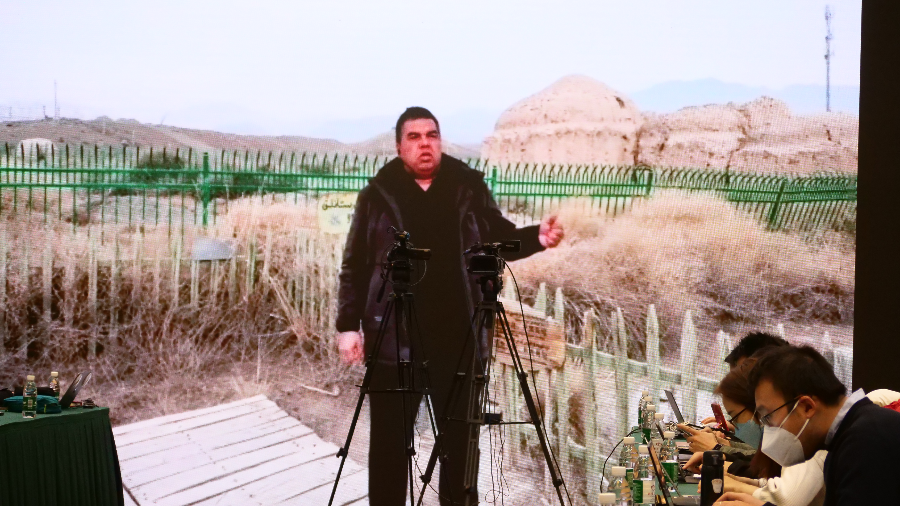
Photo taken on December 30, 2022 shows Yaqup Hasan speaks at the 81st Press Conference on Xinjiang Uygur Autonomous Region held in Beijing via video link. (Photo by Xinjiang Daily/ Zheng Zhuo)
Yaqup Hasan: I am Yaqup Hasan, janitor of Kurmush’atam Mazar in Wensu county. I have been taking care of it for five years, and I am more than willing to tell you something about it.
Covering 46.67 hectares of land, the mazar is situated 1,700 meters above sea level on the ridge of Gumbaz Mountain east of the Tianshan Shenmu Garden (Numinous Wood Garden) on northwest of Heya village, Tumshuq town in Aksu prefecture’s Wensu county. It is 60 km from the county seat. Featuring early Islamic architecture, the mazar consists of burial sections on east and west side of the mountain pass. Back in 1999, the mazar was put under the protection of autonomous region as a cultural relic.
In order to protect this place, the Wensu government allocated 140,000 RMB in 1986 for renovation around the mazar with walls and fences built. It was identified as a cultural relic under the county’s protection in 1989, with designated staff in place for management and maintenance. In 2012, it was registered as a key cultural relic under autonomous regional protection. According to the requirements of the Measures of Xinjiang Uygur Autonomous Region for the Management of Janitors at Field Cultural Relics (Trial), two janitors were assigned to protect Kurmush’atam Mazar at Wensu county from 2018. Following the requirements of cultural relics protection authorities, on-site visit for more than once weekly, photo-taking, documentations and touring inspection are carried out to ensure the protection of the cultural relics. In 2021, to reduce human damage on cultural relics under protection, local government of Wensu initiated a protective construction project worth 150,000 RMB in total for Kurmush’atam Mazar, fencing it up for 320 meters. In 2022, a repair project to cement the floor of the east platform of the mazar, wooden-structure of the platform and the foundation of the building has so far passed the assessment of the Department of Culture and Tourism of Xinjiang, which has an investment of 100,000 RMB. In the future, the Wensu government will continue its efforts to protect and renovate the mazar.
In 2022, thanks to the strong support of the county’s Party committee and government, we have planted 18.5 hectares of sea buckthorn shrubs and added another 300 poplar seedlings around the mazar, with 13.3 hectares of flowers to be cultivated and planted in the following year, to improve the ecological environment of the place. All that we have done are for the inheritance of Chinese culture and wisdom, and preserve fine cultures of ethnic minorities. Have a visit at your convenience.
Ⅴ.Views on US Department of Commerce adding China’s tech companies to the Entity List for their involvement in operations related to Xinjiang
Xu Guixiang: Foreign media outlets reported Commerce added 36 Chinese tech entities on December 15 to the so-called Entity List, including the Tianjin Tiandi Weiye Technology Co., Ltd., which is suspected of involvement in “repression, mass detention, and high-technology surveillance” against Uygurs, Kazakhs, and members of other Muslim minority groups in Xinjiang, where violations of human rights exist.
We’ve learnt that the Tianjin-based company is a leading smart security solution provider that is legally registered and operates in accordance with law. With its strength in technologies spanning AI, big data, cloud computing, and Internet of Things, it provides intelligent video products, system solutions, and quality technical service to customers in law-enforcement, transportation, finance, education, environment conservation, etc. The company fulfills its social responsibility, abides by business ethnics, and Chinese laws and regulations, and ensures its research and development operations, products and services are in compliance with industrial standards, domestically and internationally. With a view to strengthening information infrastructure in Xinjiang, improving the autonomous region’s social governance, and building a harmonious society where people live and work in contentment. It targets no specific ethnic groups, using the company’s products targets no ethnic group, community, still less any violation of human rights and high-technology surveillance.
As is known to all, applying high-tech products in social governance is a common practice of international community. US leads the world in the investment, R&D, and application of smart security, big data, information platform. By that logic, whether these products are for the surveillance of American people? Discrediting and suppressing tech companies involved in information technology application in Xinjiang is a stark double standard. Their intention is to suppress Chinese enterprises, hold back the development of Xinjiang’s information industry, and undermine the region’s stability. We strongly oppose it.
Ⅵ. Comments on the views that Xinjiang’s Covid measures influenced its opening up
Xu Guixiang: Recently, reports of some foreign media outlets claim that, though Xinjiang is reopening up like other parts of China, its months-long Covid prevention and control before that exposed huge pressure Xinjiang had faced in forestalling inbound transmissions, which will affect the region’s confidence and prospects in opening up to the outside world. We think such worries are unnecessary.
Xinjiang as the core area of the Silk Road Economic Belt and frontier of China’s westward opening up are its distinctive advantages. It is facing a historic opportunity. Solid progress has been made in recent years in its opening up endeavors. Xinjiang has signed 20 strong cooperation agreements with 25 countries and international organizations, and its trade ties cover 176 countries. From January to October, 2022, Xinjiang’s cross-border trade grew by 60.3 percent in value to 194.79 billion yuan, 50.8 percentage points higher than the national average, ranking the first nationwide in terms of growth rate.
Border ports are gateways for Xinjiang’s opening up. There are 20 ports in Xinjiang approved for opening up by the State, including 17 border ports and 3 airports. Among them, the ports at Alataw and Horgos are accessible by railway, highway and pipeline. By October 2022, China-Europe freight trains had made a total of 10,017 trips via the two ports, a year-on-year increase of 7.8 percent. Since Europe-bound rail freight services were initiated, there have been 57 regular routes running through the two ports, reaching 19 countries and regions.
Going forward in the implementation of the spirit of the 20th CPC National Congress and following the guidance of the central economic work conference, Xinjiang will remain committed to promoting high-level opening up, better harness international and domestic markets and resources, actively serve and integrate itself into the country’s pattern of development, and work hard to promote high-quality core area development of the Silk Road Economic Belt. We will give full play to the port-based economic belt, so as to turn Xinjiang into a leading hub of opening up in China’s inland and border areas by expanding and extending the scope of openness
Ⅶ. Views on the impact of Covid measures on ice and snow tourism in Xinjiang
Now let’s invite Mr. Elijan Anayat to comment on this.
Elijan Anayat: Recent reports in foreign media claim that, as a result of rigorous Covid control measures in the last few months, there are fewer travelers coming to Xinjiang, which is rich in winter tourist resources, and that travelers who had been to the region are refraining from coming back. We disagree with such allegations.
Xinjiang is well known for its abundant ice and snow resources thanks to its latitudinal position. Apart from its world-class ice and snow endowment on par with that of Alps and Rocky Mountains, Xinjiang is distinct from others with the following characteristics: First is Xinjiang has numerous glaciers. As one of the biggest areas of Alpine glaciers, there are 18,000 strong glaciers of various sizes in Xinjiang covering 240,000 square kilometers, accounting for 42 percent of China’s total. Second is Xinjiang abounds in thick snow, particularly “powder” snow for skiing. Favorable climate prevails, with predominantly low wind speeds, mild temperatures, and generous sunshine. Xinjiang stands out with expansive and high mountains that offer a lot of slopes of appropriate degrees for skiing tails. Ski resorts across China with a vertical drop over 1,000 meters are all in the autonomous region, making it the top destination for skiing. Among them the ski resort in Koktokay, Altay Prefecture’s Fuyun county, boasts the greatest drop of over 1,200 meters. Third is ski resorts in Xinjiang are close to urban centers with convenient transportation provided. Top rated ski resorts are all accessible by railway, civil aviation and expressway. For example, Silk Road International ski resort is 50 km from Urumqi, and the ski resort Tianshan Tianchi ( Heavenly Lake in Tianshan Mountains) is 84 km from Urumqi. It is 70 km from the county seat of Fuyun to Koktokay International ski resort. And the ski resort Jiangjun Mountain is located within city limits of Altay. Fourth is realizing synergies by integrating ice and snow resources with cultural and other elements. Besides its plentiful ice and snow endowment, Xinjiang has many other resources to offer, including ethnic culture, tourist attractions, hot springs and organic foods, therefore contributing to a variety of tourist packages on top of ice and snow combining sports, sightseeing, folk culture experiencing, touring of streets of cultural and historical significance, hot spring bathing, etc. Thanks to its profound ice and snow cultural heritage and increasingly complete facilities for related sports and tourism, Xinjiang enjoys broad prospects for its ice an snow economy as its visibility as an ice and snow travel destination keeps rising.
Following the strategy of taking tourism as an important driver for economic development, Xinjiang has put in place a number of policies and measures to facilitate ice and snow tourism. As a result, Xinjiang is becoming the most favored destination for ice and snow tours and sports, thus providing an important opportunity and broad prospects for further development. December 11, Department of Culture and Tourism of Xinjiang announced 12 ice and snow routes covering culture, food and sports elements and the region’s most prefectures and cities. As a new snow season has come, “skiing” has become a popular hashtag, and winter tourism is rapidly gathering momentum across Xinjiang. To date, all the 84 ski resorts in Xinjiang have fully opened for business, including 36 S-level resorts, 6 4S-level resorts and 5 5S-level resorts. 50,000 vouchers have been handed out to to boost ice and snow tourism. Winter tourism promotion season 2022 titled “Discover the Beauty of Ice and Snow in Xinjiang” was kicked off on December 18. Altay Prefecture is staging a series of tourism activities with the 16th Winter Tourism Industry Expo of Xinjiang being the centerpiece, which is to be held in Altay city. Ili Prefecture organizes a variety of ice- and snow-themed events with a focus on local folkways. Changji Prefecture is promoting the visibility of its winter tourism through various festivals such as winter fishing festival and Lunar New Year shopping festival. In total, there have been 180 ice and snow tourism events going on across Xinjiang. Local people, known for their hospitality, are there to receive friends from all corners of the world with open arms.
Now, let’s watch a clip of video
Ⅷ.View on cotton production and sales in Xinjiang in 2022
Xu Guixiang: In recent years, Xinjiang's cotton production has taken on a momentum of larger proportion of scaled planting and increasing intensification level. This year, the cotton output in Xinjiang has reached 5.391 million tons, increasing by 262,000 tons compared with last year, with the proportion in the national total cotton output keeping growing, reaching up to 90.2 percent, a historical high. The per-unit cotton output is 143.9 kilos per mu, increasing by 7.5 kilos per mu against that of last year, up by 5.5 percent. Improvement has been witnessed in not only the yield, but also the quality. Most parts of Xinjiang enjoy long sunshine duration, big temperature difference between day and night, arid weather, low precipitation and stable supply of snow melt water from mountains, all of which provide favorable conditions for cotton growing. Cotton produced in such conditions has big bolls, long fiber, pure white color, and thus higher unit price. The cotton has won favor from domestic and foreign buyers, and its sales has been improving year by year. Of course, as you know, the US has enacted a so-called Uygur Forced Labor Prevention Act, falsely accusing that Xinjiang's cotton production involves forced labor and attempting to destroy the industrial chain of Xinjiang's cotton production, processing and sales, but actually the act is useless. If the US does not want to use Xinjiang cotton, we don’t necessarily have to sell to it. Anyway, there are so many people who need cotton for clothes and bedding in the world, so there is surely a huge cotton market.
Ⅸ.Views on the local tourism and economic development after the official operation of the first high-plateau airport in Xinjiang
Xu Guixiang: Khunjerab Airport in Xinjiang officially began operation on December 23. It is also the 25th civil airport in Xinjiang. Located in China’s westernmost point, it is the first high-plateau airport in the autonomous region. The airport elevation is 3258.4 meters, and its runway is 3,800 meters. It is the civil airport with the highest altitude and longest runway in Xinjiang.
Connected with Tajikistan, Afghanistan and Pakistan, Tashkurgan Tajik Autonomous County is known as the Pearl on the Pamir Plateau and boasts of amazing natural scenery and rich tourism resources. For example, the Muztagh Ata that sits in the county is 7,564 meters high, and known as the father of iceberg. The famous Chinese movie “Visitors from the Icy Mountains” was shot there. The theme song of the movie “Why Are the Flowers so Red?” is also known to every household in China. The eagle dance of the Tajik people has been listed into the first batch of national intangible cultural heritage, too.
With the operation of the Khunjerab Airport, tourists from different parts of the world will come to visit this place. In the past, to travel from Urumqi to Tashkurgan Tajik Autonomous county, people had to take a nearly two-hour flight to Kashgar first, and then go to Tashkurgan from Kashgar through a five-to-six hour drive; whereas now, it only takes two hours from Urumqi to Tashkurgan by direct flight. Clearly, the completion and operation of this airport remarkably improves regional transportation. It will not only facilitate tourists’ travel by plane, but also boost comprehensive, coordinated and sustainable regional economic and social development and contribute to rural vitalization and tourism development.
Xu Guixiang: Next, let’s have a discussion with our media friends.
MASTV: The US 2023 National Defense Authorization Act inserted contents related to Xinjiang, China. What's your response? The Arab states have voiced their support to Xinjiang at multilateral occasions, including the UN human rights council and UN general assembly session. Do you have any comment?
Xu Guixiang: On Dec 24, the US president Biden issued the National Defense Authorization Act. It inserted negative content about China, ignored the facts and bloated China threat. They severely interfered China's internal affairs, smeared Xinjiang's human rights. They are just finding excuses to increase military spending and maintain hegemony. Such legislation is only a political tool that the US used to interfere with other country's internal affairs. It seriously violates the basic norms of the international law and international relations. It is bare hegemonism. Relying on their economic strength, the US wielded dollars stick and displayed their power on Xinjiang-related human rights issues. They are not to protect the human rights of people of all ethnic groups in Xinjiang, but to interfere with Xinjiang affairs under the pretext of human rights. They have seriously violated the basic rights of the people in Xinjiang. The US should improve their human rights conditions with the economic strength. So those poor people won't end up on the street, the Indians won’t be left homeless and those Floyds won't be breathless. That's the just cause.
On your second question. In fact, in recent years, nearly 100 countries including the Arab states have expressed support for China's policy on governing Xinjiang and opposition to interference in China's internal affairs at multiple international occasions including the UN human rights council and the Third Committee of the UN general assembly. This September, the 51 session of the human rights council voted down a US-led draft decision on Xinjiang due to the opposition of the majority of the human rights council membership, especially many members of the developing world. This speaks volumes about who enjoys broad support and who doesn't. We appreciated the just position of those countries. This also shows that a just cause gains great support and justice will always prevail.
If there are no other questions, we will wrap up today's press conference. Thank you.









